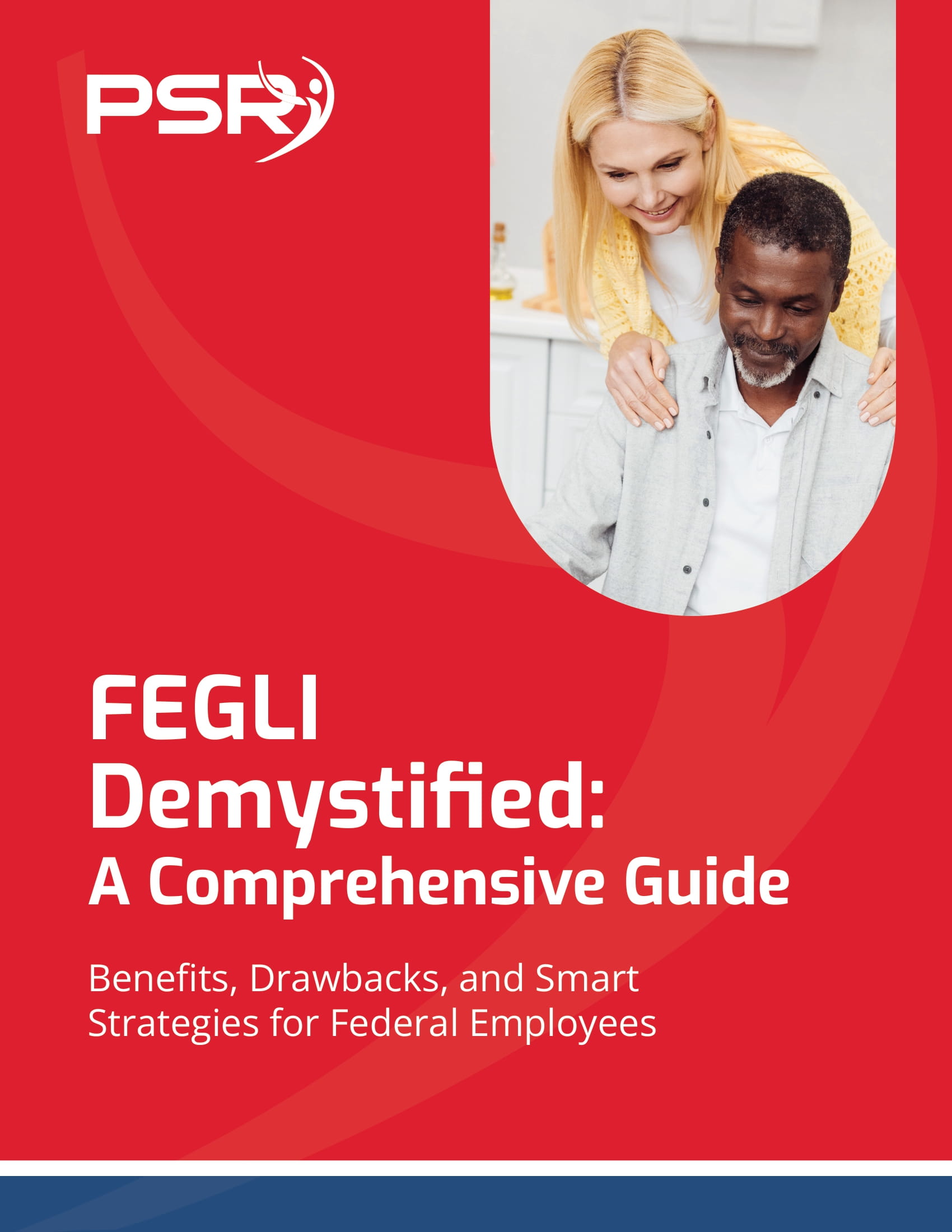Key Takeaways:
- FEGLI premiums increase sharply as you age, especially post-retirement, making it crucial to reassess your coverage periodically.
- Understanding your FEGLI options and alternatives can help you save significantly on premiums while still protecting your loved ones.
FEGLI Premiums Are Rising With Age—Here’s What Federal Employees Should Do
As federal employees, many of us have the Federal Employees’ Group Life Insurance (FEGLI) coverage, one of the most popular life insurance options
- Also Read: Ready for Retirement? Here’s How Law Enforcement Officers Can Leave the Job with Benefits Intact
- Also Read: FAA, Law Enforcement, and Special Federal Employee Categories—Here’s What Makes Their Retirement Unique
- Also Read: Blending Private and Public Sector Retirement Plans Is Complicated—Here’s Where Couples Get It Wrong
In this article, I’ll help you understand how FEGLI premiums work, why they increase with age, and what steps you can take to either make the most of your FEGLI coverage or find alternatives that may better suit your needs.
Understanding FEGLI Premium Structure
FEGLI Basics
FEGLI provides four types of coverage—Basic, Option A, Option B, and Option C—with Basic being automatic for most federal employees. Basic coverage is generally the least expensive, while the additional Options A, B, and C allow you to increase your coverage at a higher cost. Option B, for instance, allows coverage at multiples of your salary, making it a common choice for those looking to secure additional financial support for their loved ones.
Age-Based Increases in Premiums
For active federal employees, FEGLI Basic premiums are affordable since the federal government subsidizes a significant portion of the cost. However, as you reach retirement or certain age milestones, you’ll notice a steep rise in premiums, particularly with Options A and B. Generally, for every five years after age 50, premiums increase significantly.
This age-based cost structure is worth examining because it could mean your premiums double, triple, or even quadruple over time. By the time you’re in your 60s and beyond, these rising premiums can become a financial burden—especially once you’re on a fixed retirement income.
Preparing for Retirement: Assessing FEGLI’s Longevity
Consider Your Life Insurance Needs
For many federal employees, FEGLI was an excellent option early on in their careers due to affordability and convenience. However, as you move closer to retirement, your life insurance needs may change. A good first step is to consider whether you still need the same level of life insurance. Ask yourself:
- Is your mortgage paid off?
- Do you have other assets that would help cover expenses for your family?
- Have your children become financially independent?
If your financial obligations have decreased over time, you might not need as much coverage now as you did in your earlier years. Reassessing your insurance needs in retirement can help you avoid paying higher premiums for coverage that you no longer need.
Explore FEGLI’s Post-Retirement Options
FEGLI does offer some flexibility in retirement. For Basic coverage, you have options to continue coverage at a reduced or full amount. You can select a 75% reduction, a 50% reduction, or no reduction at all. Choosing a reduction option can help you save on premiums, though it also reduces your overall coverage.
With Option B, the cost tends to be a lot steeper, so some retirees choose to cancel this option entirely. However, before making a decision, it’s essential to review how much coverage your family needs and the cost-benefit analysis of continuing or reducing your coverage under Options A or B.
Alternatives to FEGLI: Weighing Your Options
Consider a Private Life Insurance Policy
One of the most common ways to mitigate rising FEGLI costs is to switch to a private life insurance policy before your premiums start to soar. Private policies often provide a level premium, meaning you pay the same amount every month or year regardless of your age. This can be especially beneficial if you’re still in relatively good health and can qualify for a favorable rate.
It’s important to compare the coverage levels, policy types (like term or whole life insurance), and premium costs to FEGLI to see if a private policy might serve you better as you transition into retirement.
Rollover Options: Leveraging Your TSP
If you’ve accumulated funds in your Thrift Savings Plan (TSP) or other retirement accounts, you could also explore how those funds might serve as a form of financial security for your loved ones. For example, drawing from TSP funds could potentially replace the need for certain FEGLI coverage. This is especially relevant if your primary concern is providing a cushion for final expenses or short-term income support.
Using TSP or other retirement savings in place of higher FEGLI premiums can be a more efficient way to support your family financially, especially if your life insurance needs are modest.
Keep an Eye on FEGLI Rates as You Age
Schedule Regular Check-Ins
With FEGLI’s premium hikes, it’s essential to keep tabs on the age brackets that trigger rate increases and to assess your premiums regularly. Set up reminders to review your FEGLI plan every few years, especially as you approach major age milestones like 50, 55, and 60.
Monitor Changes to FEGLI Policies
Life insurance policies, including FEGLI, can occasionally change in structure, rates, or options. Staying informed on FEGLI’s latest updates will help you plan ahead and anticipate potential adjustments you might need to make to your coverage.
Take Advantage of the FEGLI Open Season
From time to time, the Office of Personnel Management (OPM) announces an Open Season for FEGLI, allowing federal employees to make changes to their life insurance coverage without the usual requirements for medical exams or other conditions. Open Seasons don’t happen every year, so if you have a chance to adjust your FEGLI coverage during one, consider it an opportunity to either increase, decrease, or even drop certain options if they no longer serve your needs.
Make an Informed Decision: Stick With FEGLI or Consider Alternatives?
Ultimately, deciding whether to stay with FEGLI or seek alternatives requires a clear assessment of your needs, budget, and overall retirement plans. Here are some steps that can help guide your decision:
- Review your current premiums: Determine how much you’re paying now and what future costs might look like.
- Assess your coverage requirements: How much coverage do you genuinely need?
- Compare with private options: Shop around and get quotes to compare the cost and benefits of private insurance policies.
- Consider TSP or other assets: Assess whether your retirement savings could serve as a substitute for certain types of insurance coverage.
Making these comparisons every few years ensures you’re not overpaying for insurance that you might not even need, all while keeping coverage tailored to your changing financial responsibilities.
Secure Your Future Wisely
FEGLI can be a valuable benefit in your early years, but rising premiums as you age mean it’s essential to regularly reassess your options. While FEGLI offers some advantages, including ease of enrollment and subsidized rates early on, the cost structure isn’t ideal for everyone, especially post-retirement.
Considering your personal circumstances, exploring alternative insurance options, and making adjustments to your FEGLI coverage will help ensure you’re financially prepared and protected as you transition into retirement.












